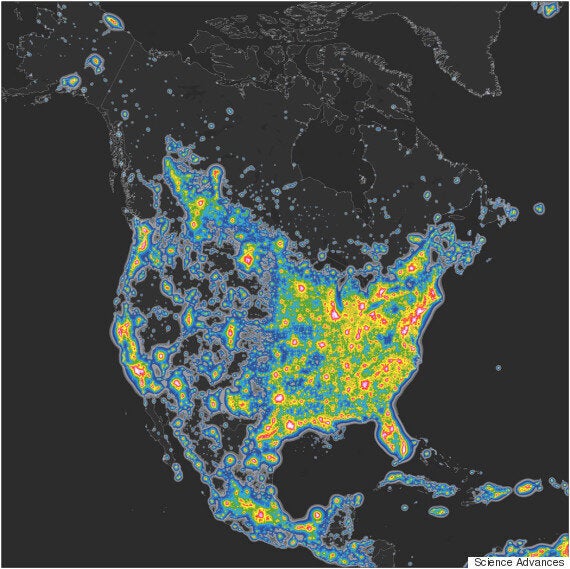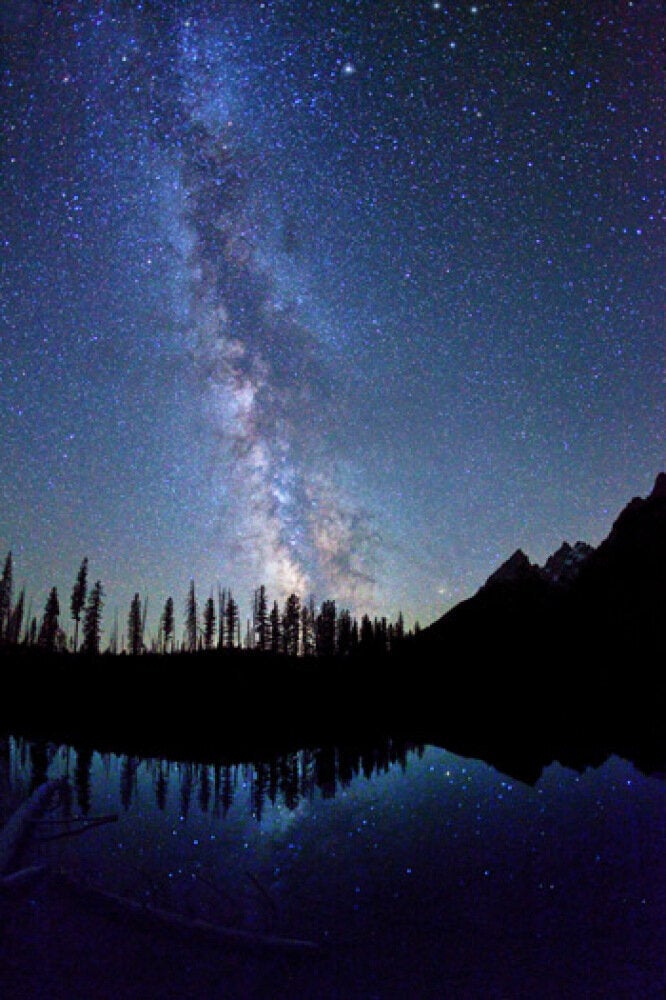The Milky Way galaxy is home to our solar system and looks like a beautiful bright band in the night sky — but only to a portion of Earth’s population.
The new World Atlas of Artificial Night Sky Brightness, released in Science Advances journal on Friday, shows that more than a third of humanity can’t see the Milky Way, and it’s taking a toll on our health.
The atlas, produced by a team of scientists lead by Fabio Falchi from the Light Pollution Science and Technology Institute, measures artificial sky glow that’s caused by light pollution. The natural lighting levels at night are altered, clouding the view of the Milky Way.
“It is the first time in human history that we have lost the direct contact with the night sky,” Falchi told The New York Times.
The report explains that light pollution can affect our health because it throws off our circadian rhythm — a 24-hour cycle that helps us to regulate sleeping, eating, and various other physiological patterns. Science Alert explains that interfering with this rhythm can cause poor sleep, obesity, diabetes, mood disorders and even some cancers.
"It is the first time in human history that we have lost the direct contact with the night sky."
Light pollution is also ecologically damaging. Astronomy Magazine says it can confuse or expose wildlife, with potentially fatal consequences.

North America's artificial sky brightness. (Photo: Science Advances)
The atlas shows that 60 per cent of Europeans and 80 per cent of North Americans cannot see the Milky Way because of artificial sky glow, and the country most affected by light pollution is Singapore. In fact, the report states that “the entire population lives under skies so bright that the eye cannot fully dark-adapt to night vision.”
The countries least affected by light pollution are Chad, Central African Republic and Madagascar, with more than 75 per cent of their population living under unpolluted skies.
But there are things you can do. The report provides various methods of limiting light pollution, including simple tasks like shutting off and dimming lights that aren’t in use, and shielding lights so that they don’t shine outside the area they are meant to be illuminating.
Falchi and his colleagues say that future generations will be able to see the Milky Way if we can get light pollution under control. Otherwise, they foresee "nearly the entire population never experiencing a view of the stars."
Also on HuffPost
